JAJSDB1 June 2017 LM340-MIL
PRODUCTION DATA.
6 Specifications
6.1 Absolute Maximum Ratings
over operating free-air temperature range (unless otherwise noted)(1)(2)| MIN | MAX | UNIT | ||
|---|---|---|---|---|
| DC input voltage | 35 | V | ||
| Internal power dissipation(3) | Internally Limited | |||
| Maximum junction temperature | 150 | °C | ||
| Storage temperature, Tstg | −65 | 150 | °C | |
(1) Stresses beyond those listed under Absolute Maximum Ratings may cause permanent damage to the device. These are stress ratings only, which do not imply functional operation of the device at these or any other conditions beyond those indicated under Recommended Operating Conditions. Exposure to absolute-maximum-rated conditions for extended periods may affect device reliability.
(2) If Military/Aerospace specified devices are required, please contact the Texas Instruments Sales Office/Distributors for availability and specifications.
(3) The maximum allowable power dissipation at any ambient temperature is a function of the maximum junction temperature for operation (TJMAX = 125°C or 150°C), the junction-to-ambient thermal resistance (θJA), and the ambient temperature (TA). PDMAX = (TJMAX − TA)/θJA. If this dissipation is exceeded, the die temperature rises above TJMAX and the electrical specifications do not apply. If the die temperature rises above 150°C, the device goes into thermal shutdown. For the TO-3 package (NDS), the junction-to-ambient thermal resistance (θJA) is 39°C/W. When using a heat sink, θJA is the sum of the 4°C/W junction-to-case thermal resistance (θJC) of the TO-3 package and the case-to-ambient thermal resistance of the heat sink. For the TO-220 package (NDE), θJA is 54°C/W and θJC is 4°C/W. If SOT-223 is used, the junction-to-ambient thermal resistance is 174°C/W and can be reduced by a heat sink (see Applications Hints on heat sinking).If the DDPAK\TO-263 package is used, the thermal resistance can be reduced by increasing the PCB copper area thermally connected to the package: Using 0.5 square inches of copper area, θJA is 50°C/W; with 1 square inch of copper area, θJA is 37°C/W; and with 1.6 or more inches of copper area, θJA is 32°C/W.
6.2 ESD Ratings
| VALUE | UNIT | |||
|---|---|---|---|---|
| V(ESD) | Electrostatic discharge | Human-body model (HBM)(1) | ±2000 | V |
(1) ESD rating is based on the human-body model, 100 pF discharged through 1.5 kΩ.
6.3 Recommended Operating Conditions
over operating free-air temperature range (unless otherwise noted)| MIN | MAX | UNIT | ||
|---|---|---|---|---|
| Temperature (TA) | 0 | 125 | °C | |
6.4 Thermal Information
| THERMAL METRIC(1) | LM340-MIL | UNIT | ||||
|---|---|---|---|---|---|---|
| NDE (TO-220) |
KTT (DDPAK/TO-263) |
DCY (SOT-223) |
NDS (TO-3) |
|||
| 3 PINS | 3 PINS | 4 PINS | 2 PINS | |||
| RθJA | Junction-to-ambient thermal resistance | 23.9 | 44.8 | 62.1 | 39 | °C/W |
| RθJC(top) | Junction-to-case (top) thermal resistance | 16.7 | 45.6 | 44 | 2 | °C/W |
| RθJB | Junction-to-board thermal resistance | 5.3 | 24.4 | 10.7 | — | °C/W |
| ψJT | Junction-to-top characterization parameter | 3.2 | 11.2 | 2.7 | — | °C/W |
| ψJB | Junction-to-board characterization parameter | 5.3 | 23.4 | 10.6 | — | °C/W |
| RθJC(bot) | Junction-to-case (bottom) thermal resistance | 1.7 | 1.5 | — | — | °C/W |
(1) For more information about traditional and new thermal metrics, see the Semiconductor and IC Package Thermal Metrics application report.
6.5 Electrical Characteristics: VO = 5 V, VI = 10 V
0°C ≤ TJ ≤ 125°C unless otherwise specified(1)| PARAMETER | TEST CONDITIONS | MIN | TYP | MAX | UNIT | ||
|---|---|---|---|---|---|---|---|
| VO | Output voltage | TJ = 25°C, 5 mA ≤ IO ≤ 1 A | 4.8 | 5 | 5.2 | V | |
| PD ≤ 15 W, 5 mA ≤ IO ≤ 1 A 7.5 V ≤ VIN ≤ 20 V |
4.75 | 5.25 | V | ||||
| ΔVO | Line regulation | IO = 500 mA | TJ = 25°C 7V ≤ VIN ≤ 25V |
3 | 50 | mV | |
| Over temperature 8V ≤ VIN ≤ 20V |
50 | mV | |||||
| IO ≤ 1 A | TJ = 25°C 7.5V ≤ VIN ≤ 20V |
50 | mV | ||||
| Over temperature 8V ≤ VIN ≤ 12V |
25 | mV | |||||
| ΔVO | Load regulation | TJ = 25°C | 5 mA ≤ IO ≤ 1.5 A | 10 | 50 | mV | |
| 250 mA ≤ IO ≤ 750 mA | 25 | mV | |||||
| Over temperature, 5 mA ≤ IO ≤ 1 A | 50 | mV | |||||
| IQ | Quiescent current | IO ≤ 1 A | TJ = 25°C | 8 | mA | ||
| Over temperature | 8.5 | mA | |||||
| ΔIQ | Quiescent current change | 0°C ≤ TJ ≤ 125°C, 5 mA ≤ IO ≤ 1 A | 0.5 | mA | |||
| 7 V ≤ VIN ≤ 20 V | TJ = 25°C, IO ≤ 1 A | 1 | mA | ||||
| Over temperature, IO ≤ 500 mA | 1 | mA | |||||
| VN | Output noise voltage | TA = 25°C, 10 Hz ≤ f ≤ 100 kHz | 40 | μV | |||
 |
Ripple rejection | f = 120 Hz 8 V ≤ VIN ≤ 18 V |
TJ = 25°C, IO ≤ 1 A | 62 | 80 | dB | |
| Over temperature, IO ≤ 500 mA | 62 | dB | |||||
| RO | Dropout voltage | TJ = 25°C, IO = 1 A | 2 | V | |||
| Output resistance | f = 1 kHz | 8 | mΩ | ||||
| Short-circuit current | TJ = 25°C | 2.1 | A | ||||
| Peak output current | TJ = 25°C | 2.4 | A | ||||
| Average TC of VOUT | Over temperature, IO = 5 mA | −0.6 | mV/°C | ||||
| VIN | Input voltage required to maintain line regulation | TJ = 25°C, IO ≤ 1 A | 7.5 | V | |||
(1) All characteristics are measured with a 0.22-μF capacitor from input to ground and a 0.1-μF capacitor from output to ground. All characteristics except noise voltage and ripple rejection ratio are measured using pulse techniques (tw ≤ 10 ms, duty cycle ≤ 5%). Output voltage changes due to changes in internal temperature must be taken into account separately.
6.6 Electrical Characteristics: VO = 12 V, VI = 19 V
0°C ≤ TJ ≤ 125°C unless otherwise specified(1)| PARAMETER | TEST CONDITIONS | MIN | TYP | MAX | UNIT | ||
|---|---|---|---|---|---|---|---|
| VO | Output voltage | TJ = 25°C, 5 mA ≤ IO ≤ 1 A | 11.5 | 12 | 12.5 | V | |
| PD ≤ 15 W, 5 mA ≤ IO ≤ 1 A 14.5 V ≤ VIN ≤ 27 V |
11.4 | 12.6 | V | ||||
| ΔVO | Line regulation | IO = 500 mA | TJ = 25°C 14.5V ≤ VIN ≤ 30V |
4 | 120 | mV | |
| Over temperature 15V ≤ VIN ≤ 27V |
120 | mV | |||||
| IO ≤ 1 A | TJ = 25°C 14.6V ≤ VIN ≤ 27V |
120 | mV | ||||
| Over temperature 16V ≤ VIN ≤ 22V |
60 | mV | |||||
| ΔVO | Load regulation | TJ = 25°C | 5 mA ≤ IO ≤ 1.5 A | 12 | 120 | mV | |
| 250 mA ≤ IO ≤ 750 mA | 60 | mV | |||||
| Over temperature, 5 mA ≤ IO ≤ 1 A | 120 | mV | |||||
| IQ | Quiescent current | IO ≤ 1 A | TJ = 25°C | 8 | mA | ||
| Over temperature | 8.5 | mA | |||||
| ΔIQ | Quiescent current change | 5 mA ≤ IO ≤ 1 A | 0.5 | mA | |||
| TJ = 25°C, IO ≤ 1 A 14.8 V ≤ VIN ≤ 27 V |
1 | mA | |||||
| Over temperature, IO ≤ 500 mA 14.5 V ≤ VIN ≤ 30 V |
1 | mA | |||||
| VN | Output noise voltage | TA = 25°C, 10 Hz ≤ f ≤ 100 kHz | 75 | μV | |||
 |
Ripple rejection | f = 120 Hz 15 V ≤ VIN ≤ 25 V |
TJ = 25°C, IO ≤ 1 A | 55 | 72 | dB | |
| Over temperature, IO ≤ 500 mA, | 55 | dB | |||||
| RO | Dropout voltage | TJ = 25°C, IO = 1 A | 2 | V | |||
| Output resistance | f = 1 kHz | 18 | mΩ | ||||
| Short-circuit current | TJ = 25°C | 1.5 | A | ||||
| Peak output current | TJ = 25°C | 2.4 | A | ||||
| Average TC of VOUT | Over temperature, IO = 5 mA | −1.5 | mV/°C | ||||
| VIN | Input voltage required to maintain line regulation | TJ = 25°C, IO ≤ 1 A | 14.6 | V | |||
(1) All characteristics are measured with a 0.22-μF capacitor from input to ground and a 0.1-μF capacitor from output to ground. All characteristics except noise voltage and ripple rejection ratio are measured using pulse techniques (tw ≤ 10 ms, duty cycle ≤ 5%). Output voltage changes due to changes in internal temperature must be taken into account separately.
6.7 Electrical Characteristics: VO = 15 V, VI = 23 V
0°C ≤ TJ ≤ 125°C unless otherwise specified(1)| PARAMETER | TEST CONDITIONS | MIN | TYP | MAX | UNIT | ||
|---|---|---|---|---|---|---|---|
| VO | Output voltage | TJ = 25°C, 5 mA ≤ IO ≤ 1 A | 14.4 | 15 | 15.6 | V | |
| PD ≤ 15 W, 5 mA ≤ IO ≤ 1 A 17.5 V ≤ VIN ≤ 30 V |
14.25 | 15.75 | V | ||||
| ΔVO | Line regulation | IO = 500 mA | TJ = 25°C 17.5 V ≤ VIN ≤ 30 V |
4 | 150 | mV | |
| Over temperature 18.5 V ≤ VIN ≤ 30 V |
150 | mV | |||||
| IO ≤ 1 A | TJ = 25°C 17.7 V ≤ VIN ≤ 30 V |
150 | mV | ||||
| Over temperature 20 V ≤ VIN ≤ 26 V |
75 | mV | |||||
| ΔVO | Load regulation | TJ = 25°C | 5 mA ≤ IO ≤ 1.5 A | 12 | 150 | mV | |
| 250 mA ≤ IO ≤ 750 mA | 75 | mV | |||||
| Over temperature, 5 mA ≤ IO ≤ 1 A, | 150 | mV | |||||
| IQ | Quiescent current | IO ≤ 1 A | TJ = 25°C | 8 | mA | ||
| Over temperature | 8.5 | mA | |||||
| ΔIQ | Quiescent current change | 5 mA ≤ IO ≤ 1 A | 0.5 | mA | |||
| TJ = 25°C, IO ≤ 1 A 17.9 V ≤ VIN ≤ 30 V |
1 | mA | |||||
| Over temperature, IO ≤ 500 mA 17.5 V ≤ VIN ≤ 30 V |
1 | mA | |||||
| VN | Output noise voltage | TA = 25°C, 10 Hz ≤ f ≤ 100 kHz | 90 | μV | |||
 |
Ripple rejection | f = 120 Hz 18.5 V ≤ VIN ≤ 28.5 V |
TJ = 25°C, IO ≤ 1 A | 54 | 70 | dB | |
| Over temperature, IO ≤ 500 mA, | 54 | dB | |||||
| RO | Dropout voltage | TJ = 25°C, IO = 1 A | 2 | V | |||
| Output resistance | f = 1 kHz | 19 | mΩ | ||||
| Short-circuit current | TJ = 25°C | 1.2 | A | ||||
| Peak output current | TJ = 25°C | 2.4 | A | ||||
| Average TC of VOUT | Over temperature, IO = 5 mA | −1.8 | mV/°C | ||||
| VIN | Input voltage required to maintain line regulation | TJ = 25°C, IO ≤ 1 A | 17.7 | V | |||
(1) All characteristics are measured with a 0.22-μF capacitor from input to ground and a 0.1-μF capacitor from output to ground. All characteristics except noise voltage and ripple rejection ratio are measured using pulse techniques (tw ≤ 10 ms, duty cycle ≤ 5%). Output voltage changes due to changes in internal temperature must be taken into account separately.
6.8 Typical Characteristics
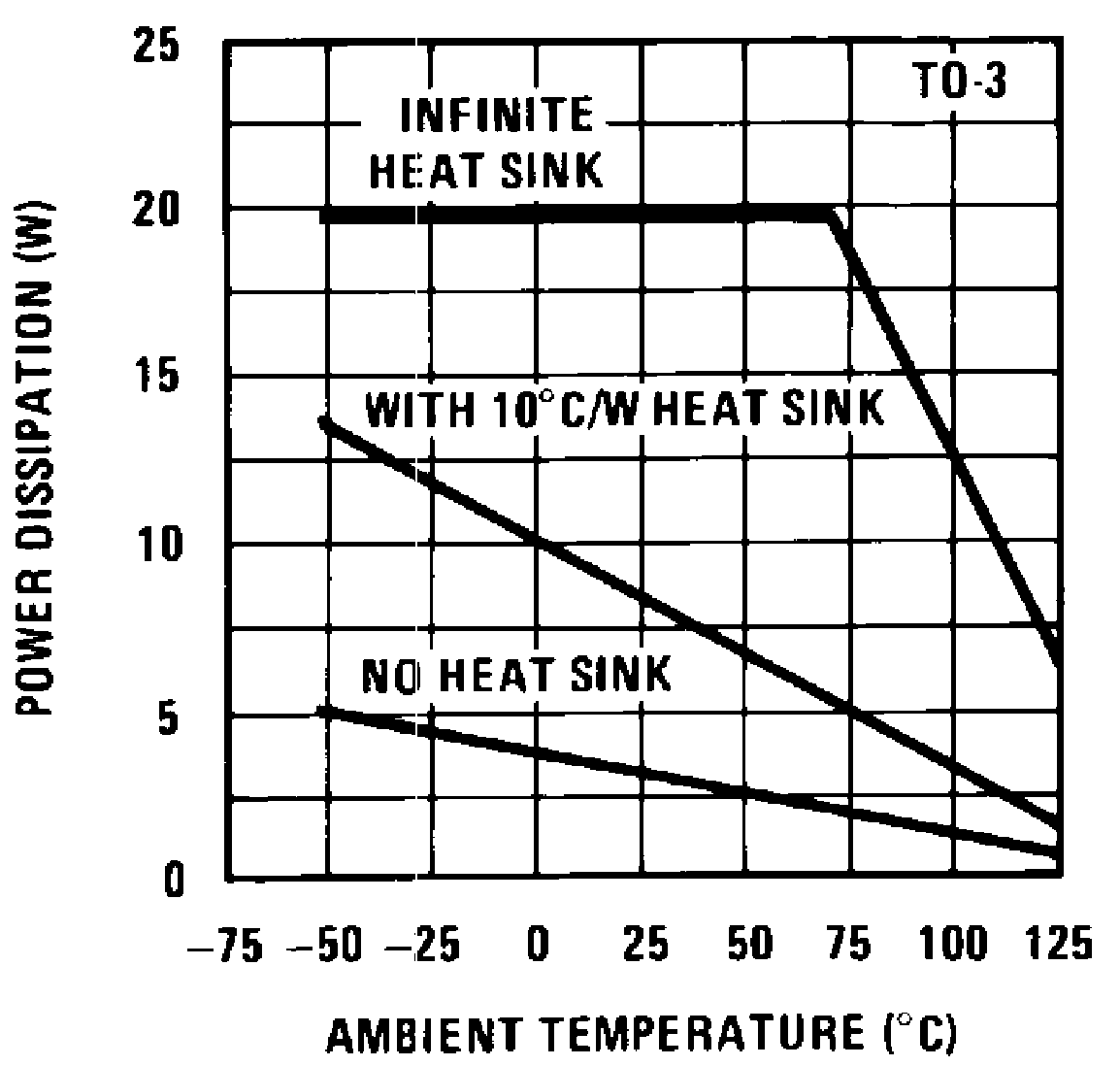 Figure 1. Maximum Average Power Dissipation
Figure 1. Maximum Average Power Dissipation
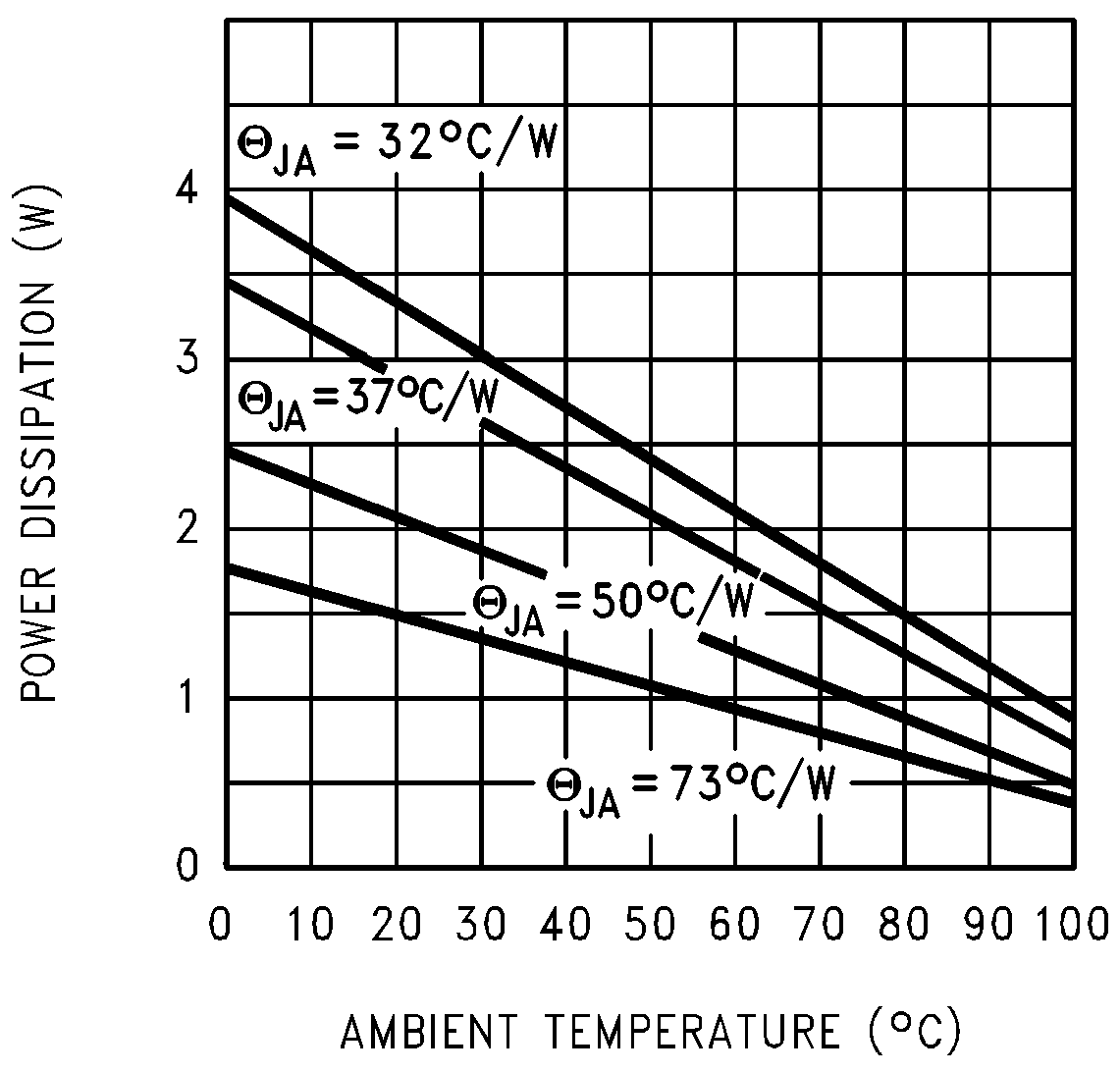
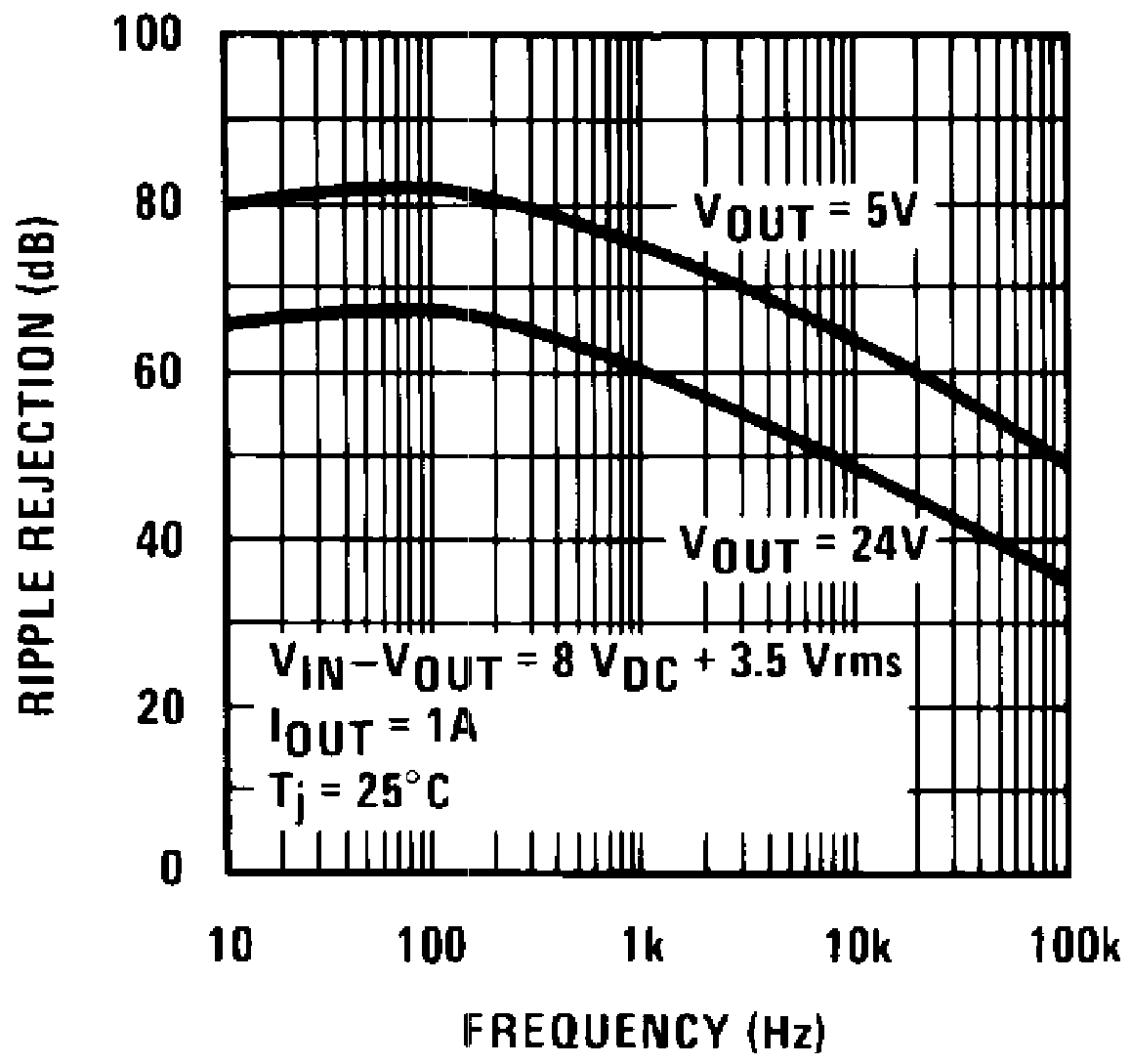 Figure 5. Ripple Rejection
Figure 5. Ripple Rejection
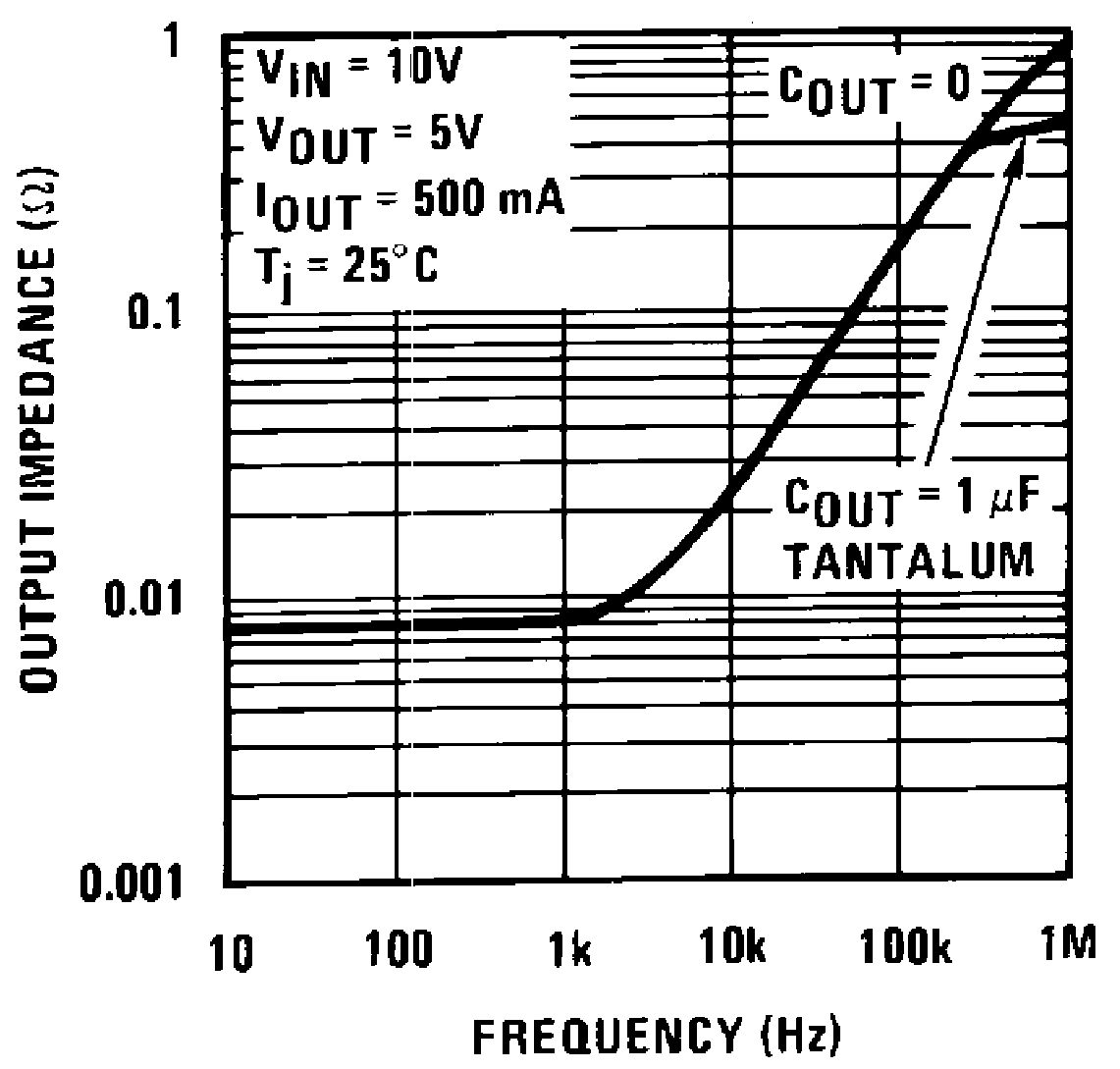 Figure 7. Output Impedance
Figure 7. Output Impedance
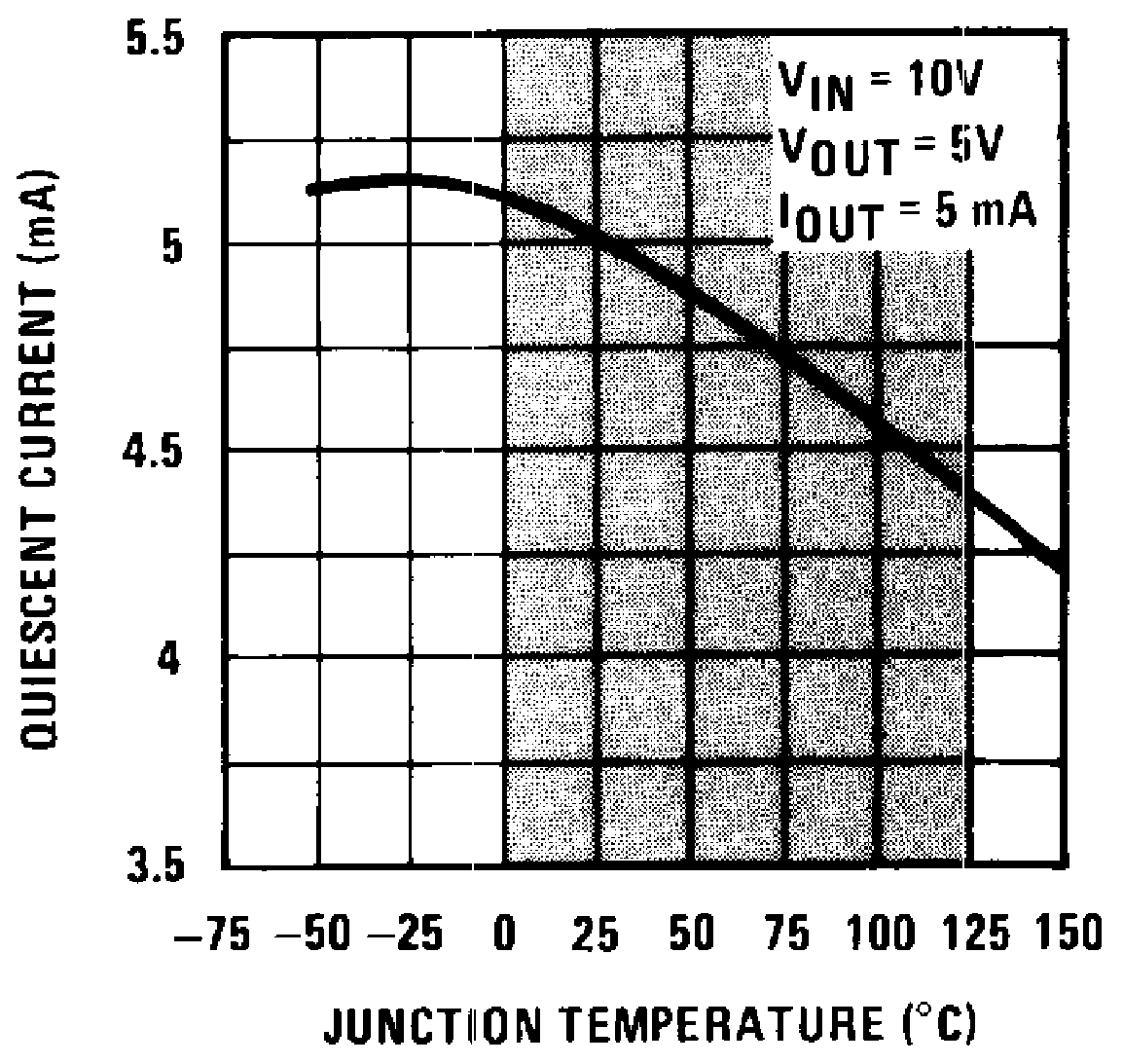
| Shaded area refers to LM340-MIL. |
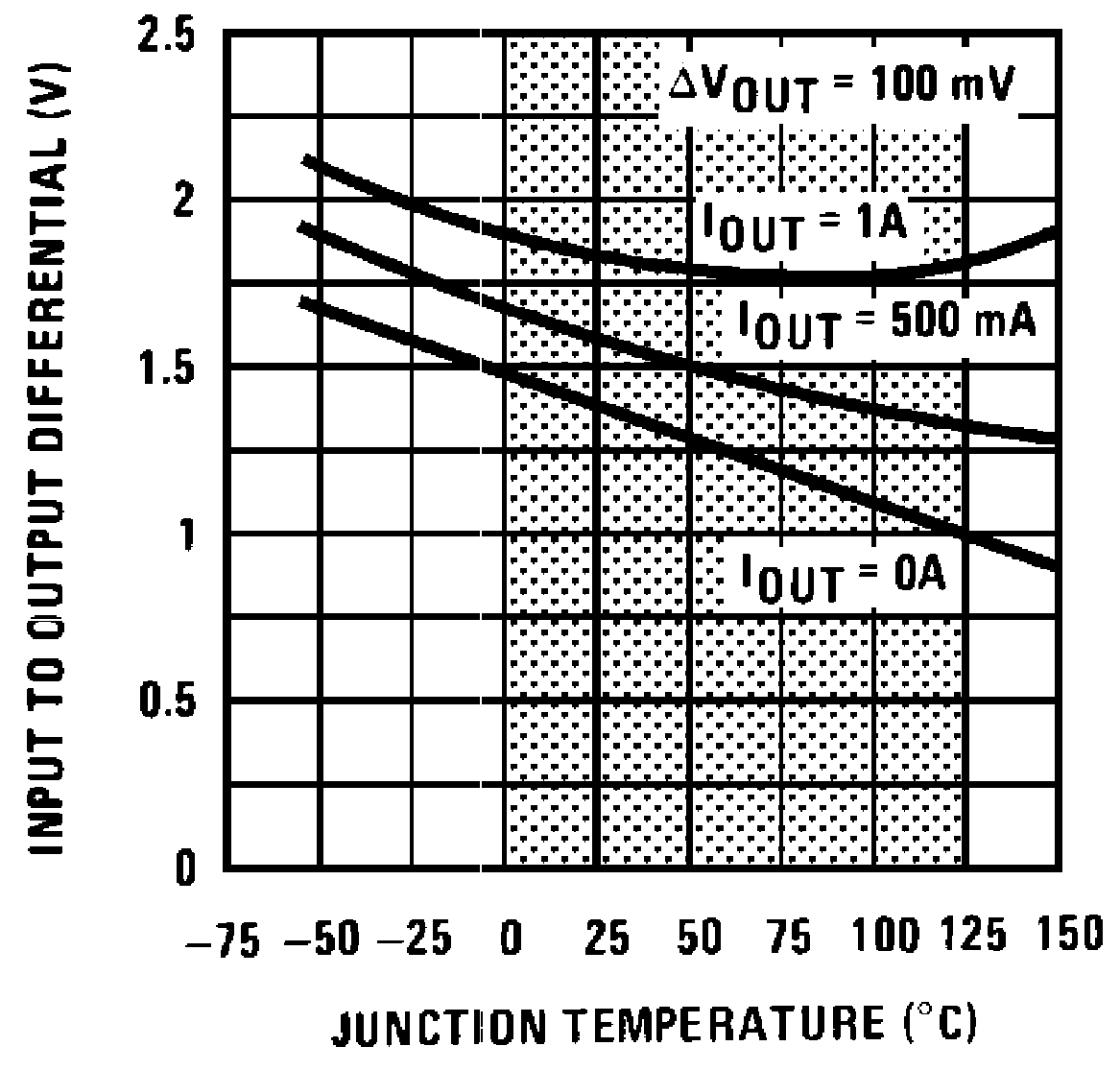
| Shaded area refers to LM340-MIL. |
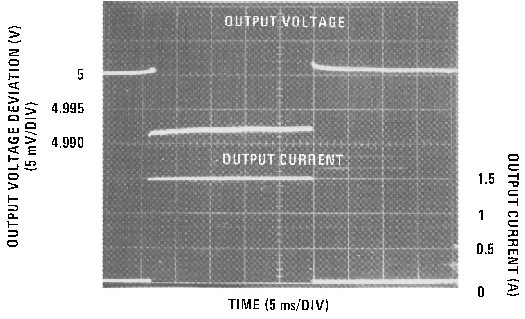
IOUT = 1 A, TA = 25°C
Figure 13. Line Regulation
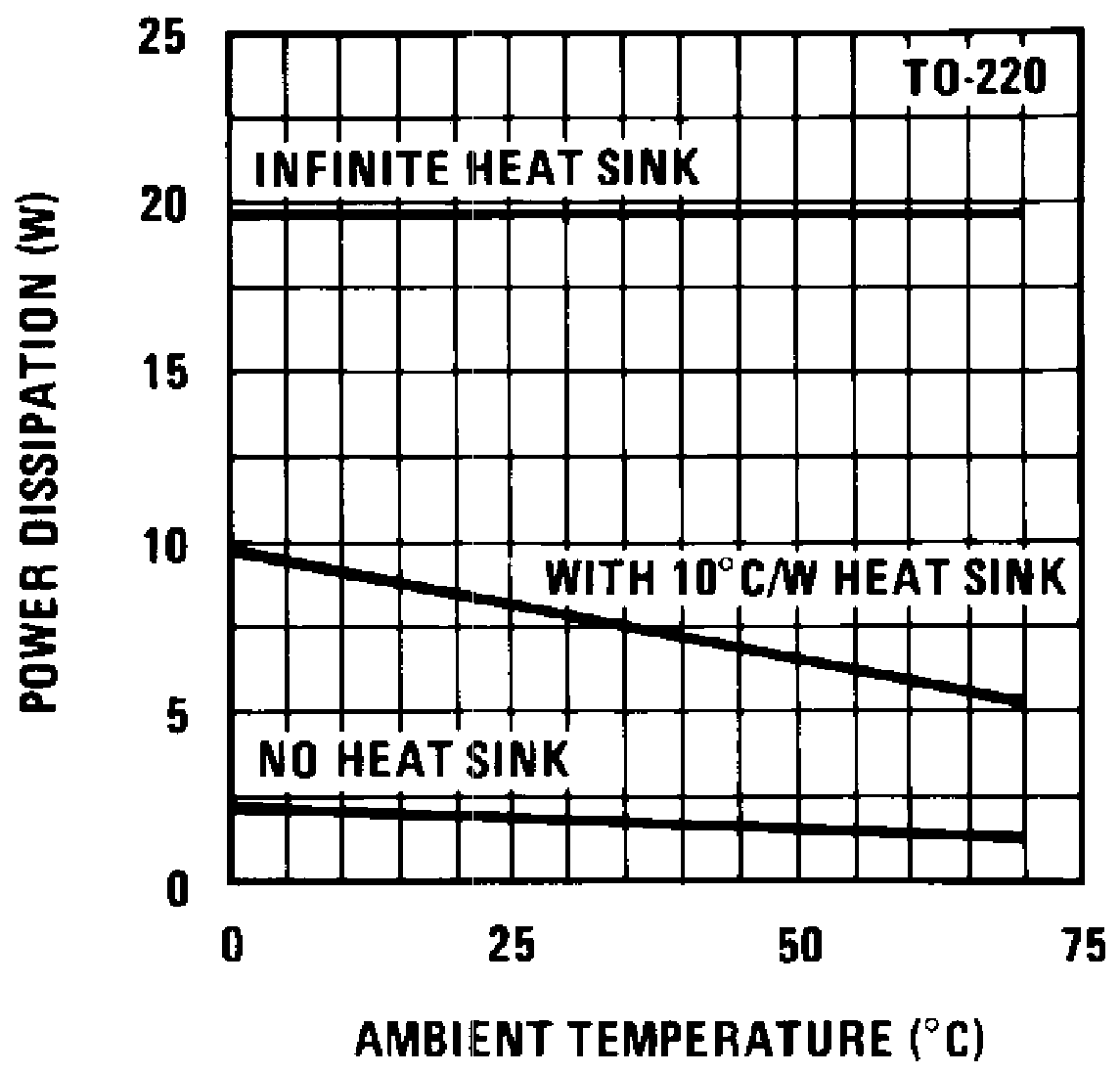 Figure 2. Maximum Average Power Dissipation
Figure 2. Maximum Average Power Dissipation
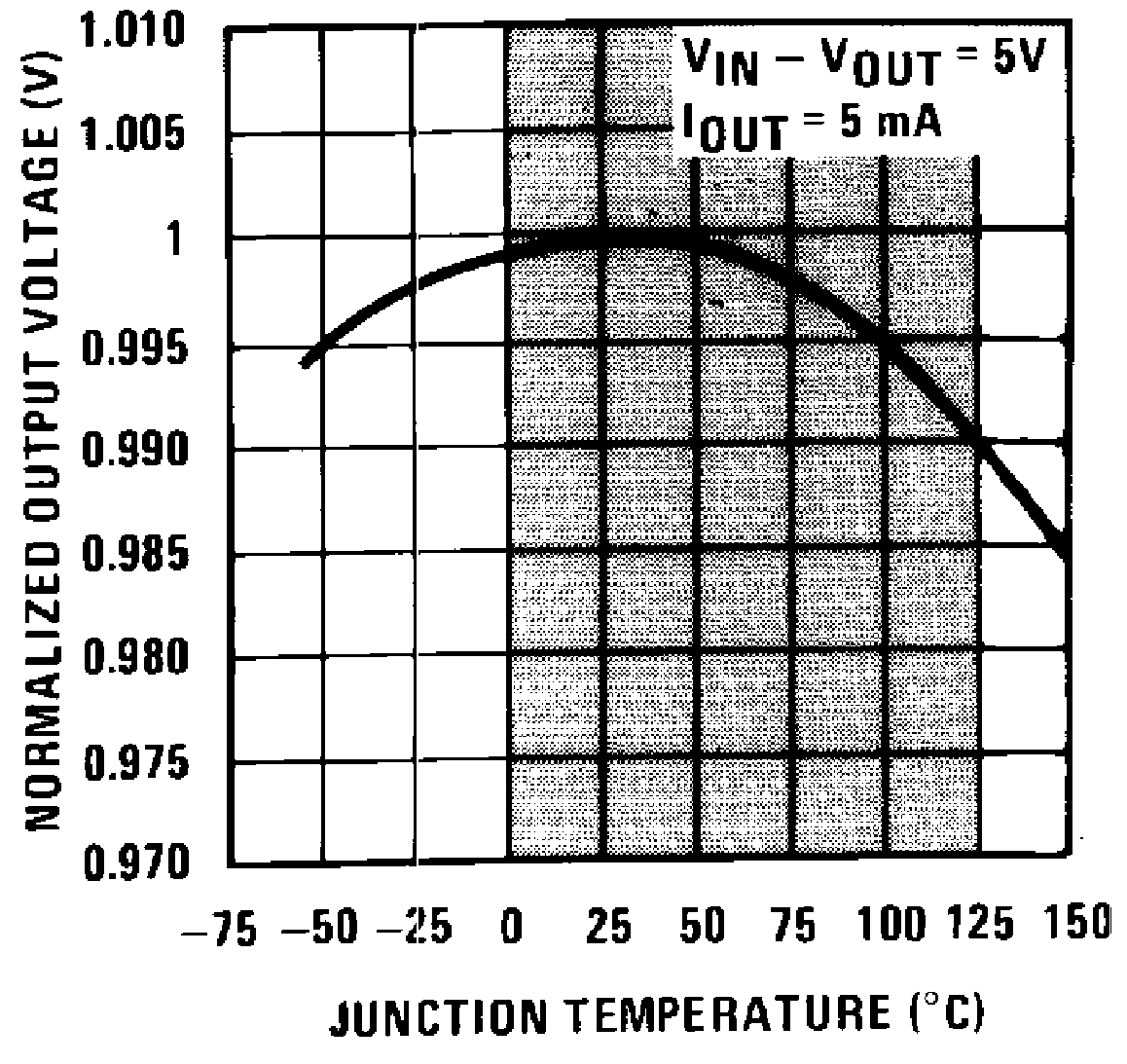
| Shaded area refers to LM340-MIL. |
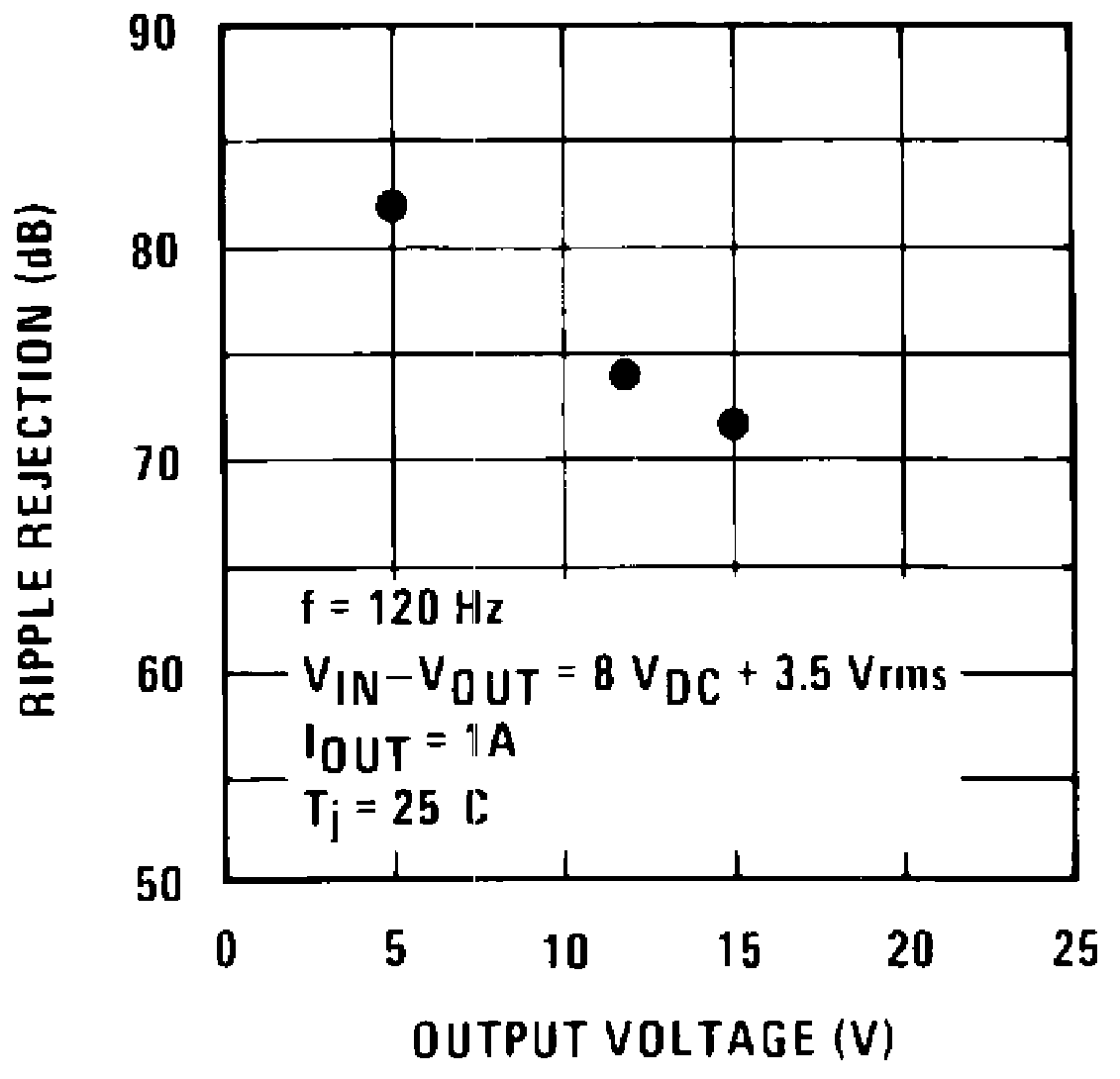 Figure 6. Ripple Rejection
Figure 6. Ripple Rejection
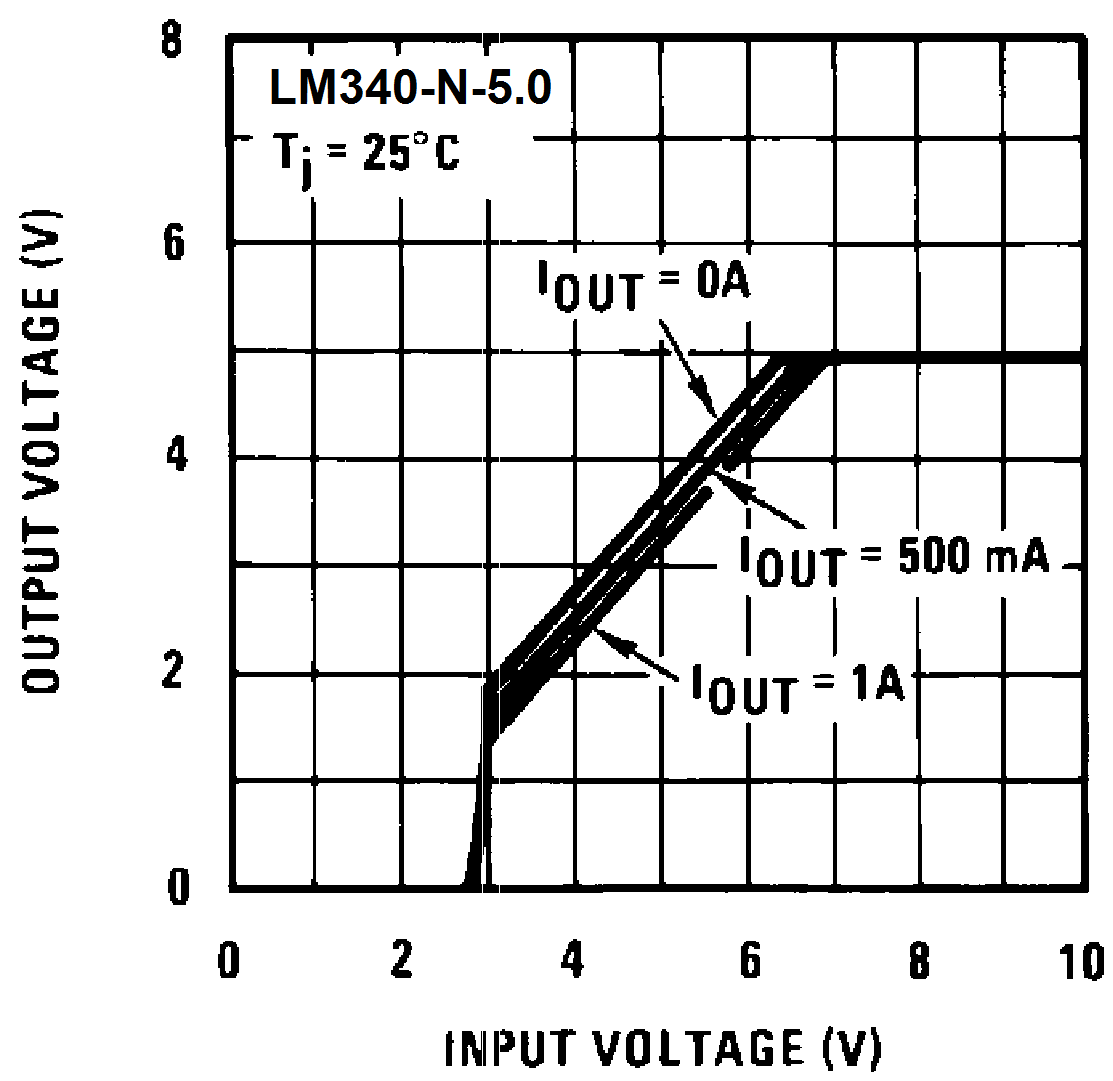 Figure 8. Dropout Characteristics
Figure 8. Dropout Characteristics
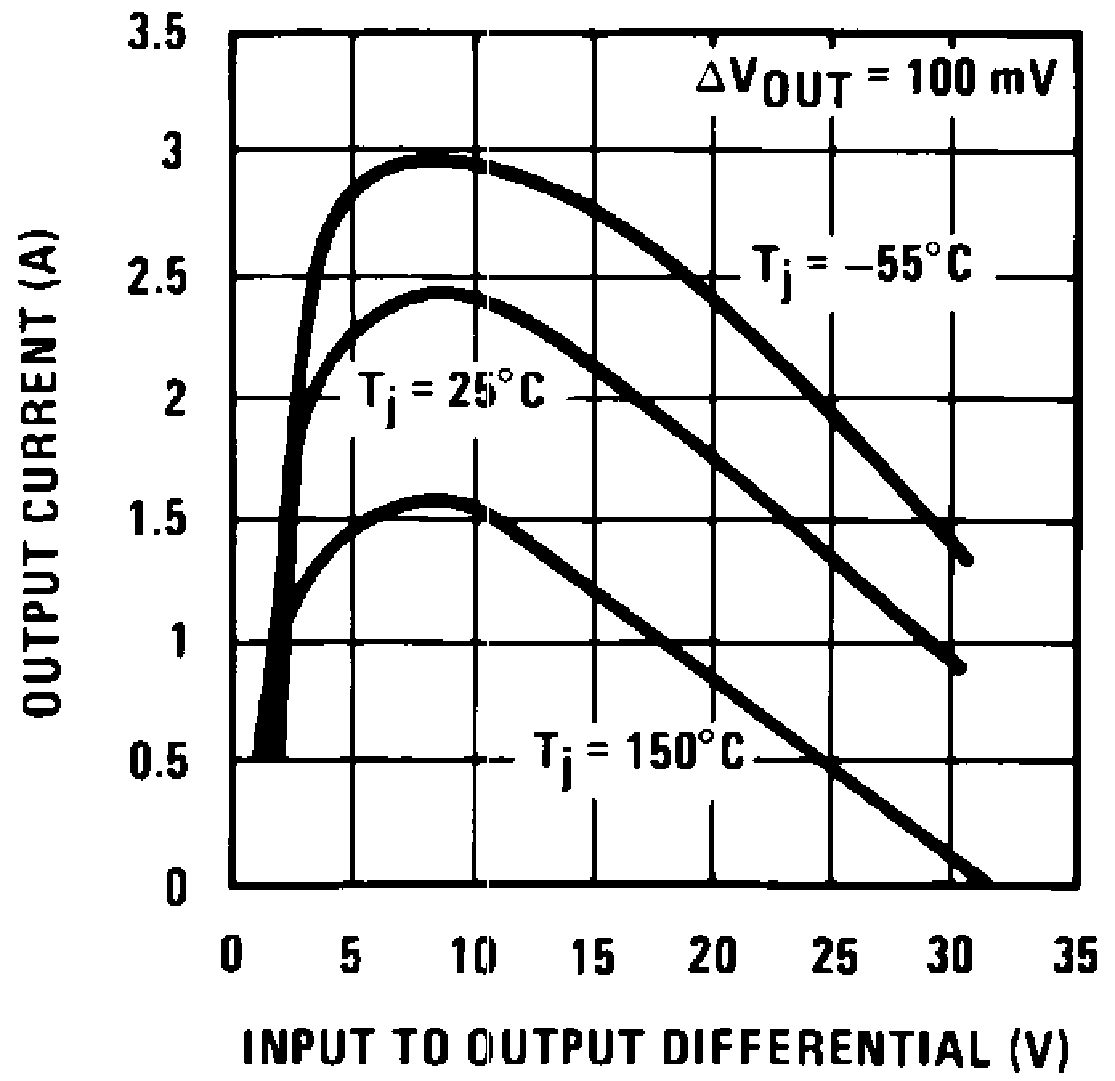
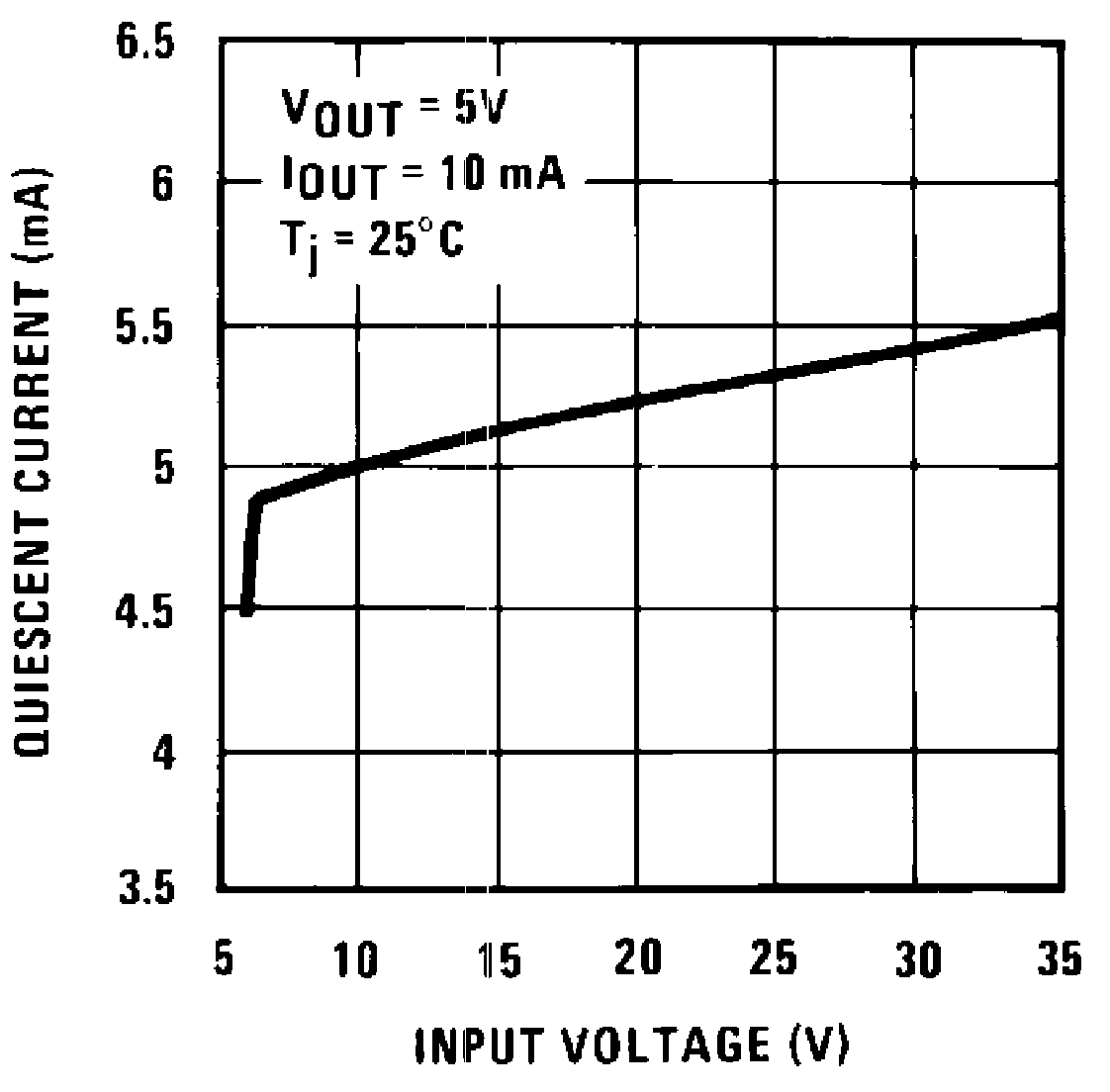 Figure 12. Quiescent Current
Figure 12. Quiescent Current
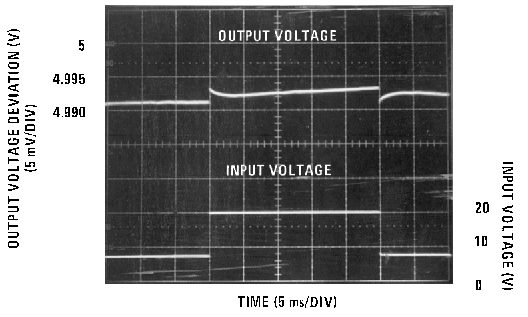
VIN = 10 V, TA = 25°C
Figure 14. Line Regulation